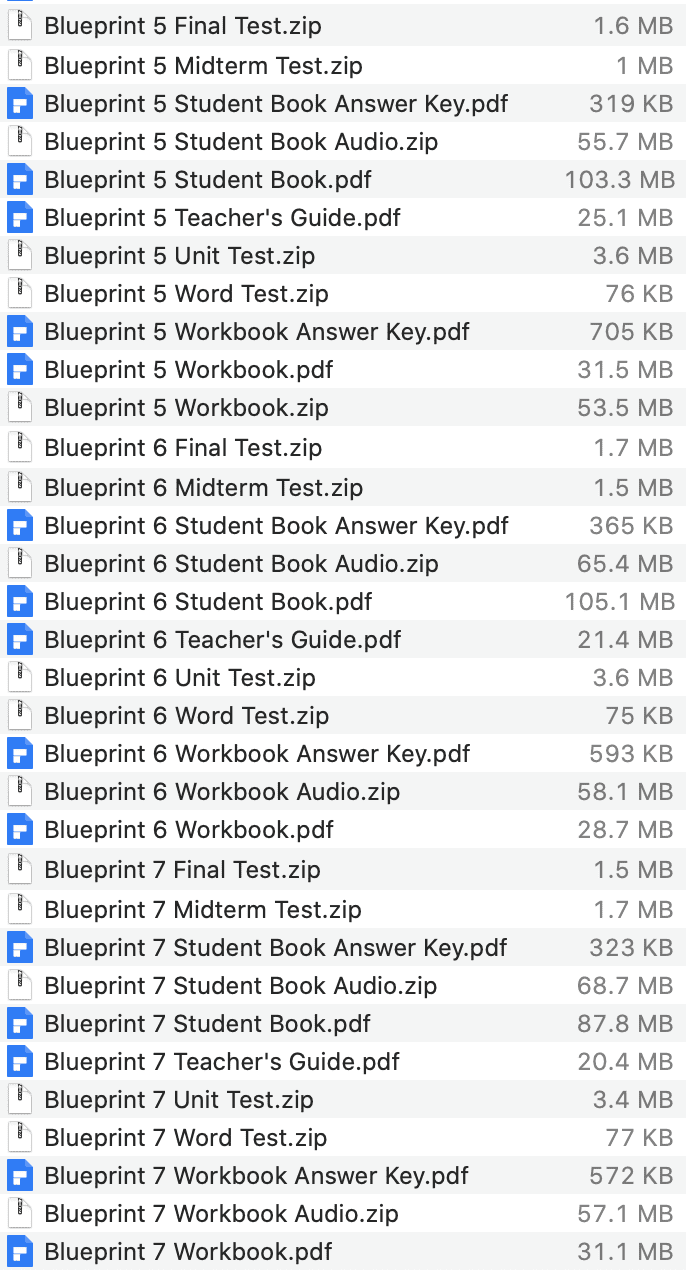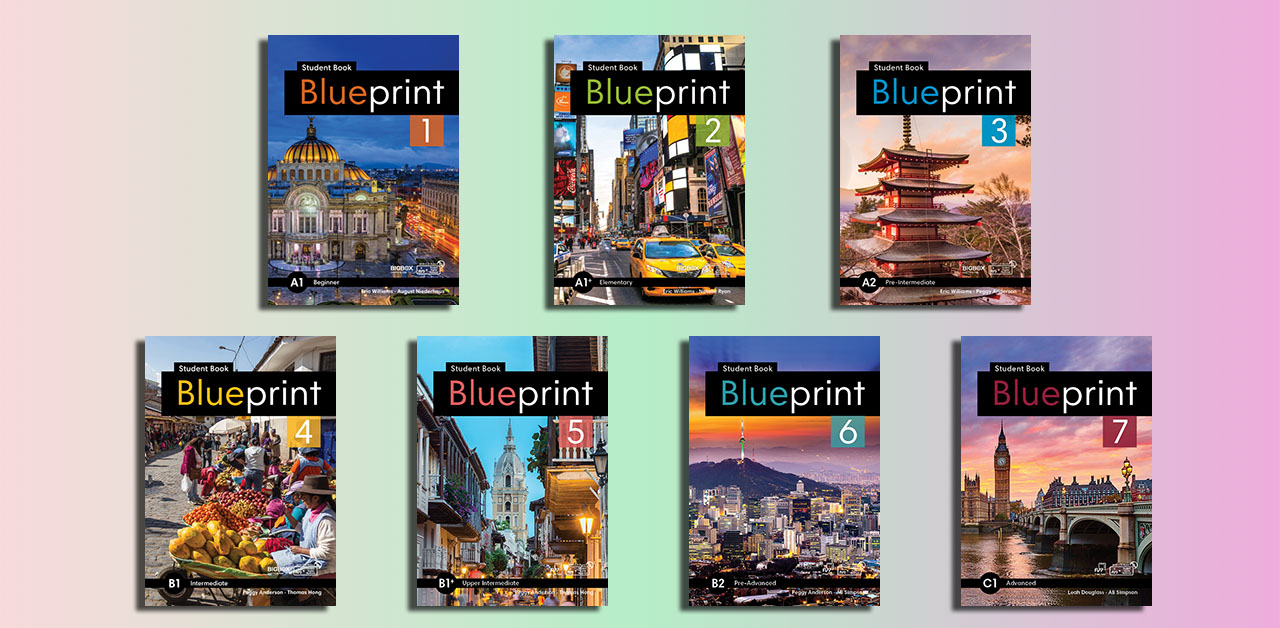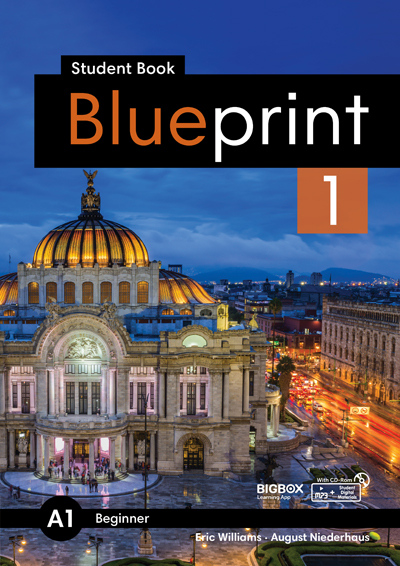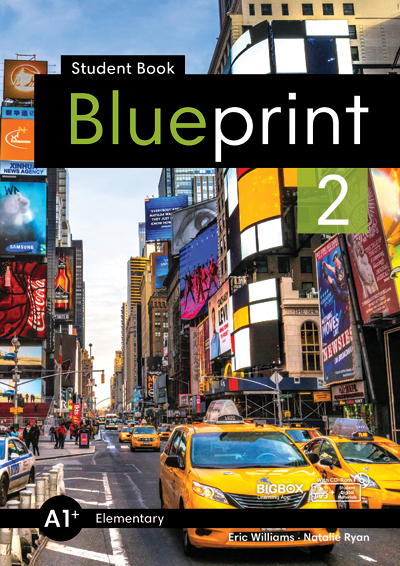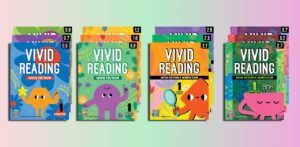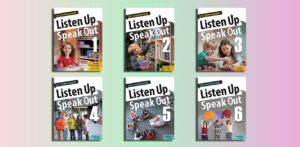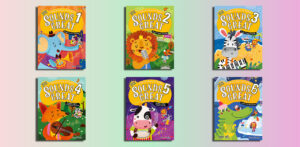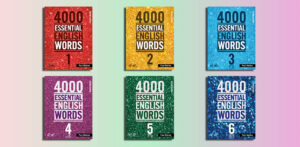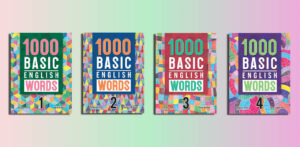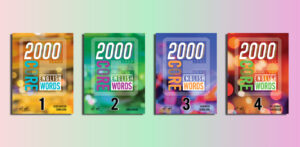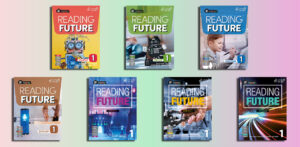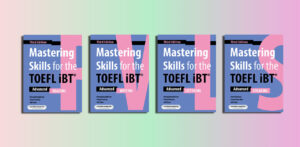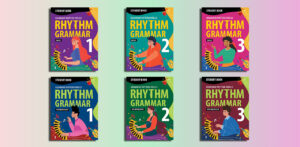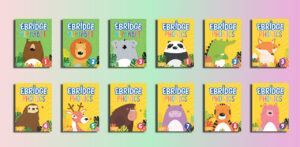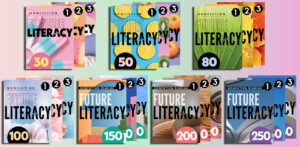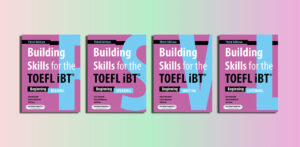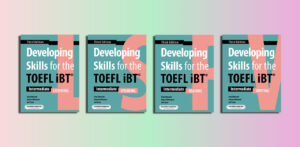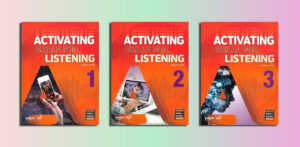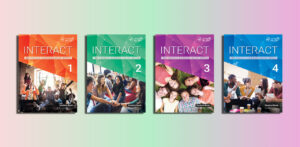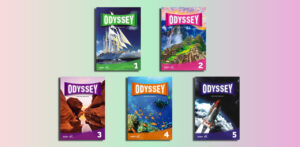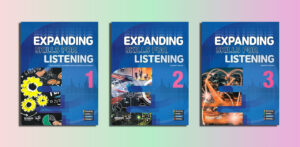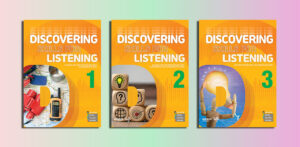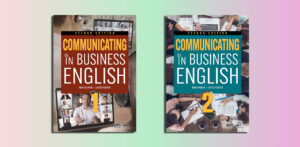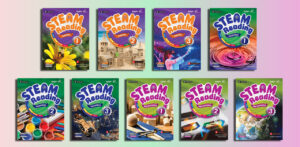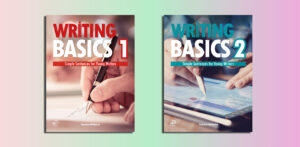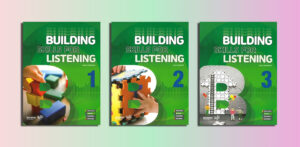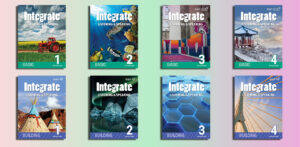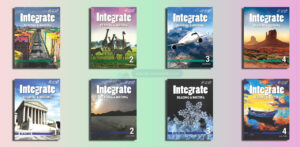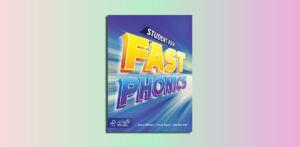Compass, Download, Online iTools
Download Compass Blueprint Pdf Resources (A1 / C1)
Blueprint (PDFs Resources)
Level 1 (A1)
Blueprint 1 Student Book.pdf – Sample: Click
Blueprint 1 Workbook.pdf – Sample: Click
Answer Key – Audio – Final Test – Midterm Test – Teacher’s Guide – Unit Test – Word Test
Level 2 (A1+)
Blueprint 2 Student Book.pdf – Sample: Click
Blueprint 2 Workbook.pdf – Sample: Click
Answer Key – Audio – Final Test – Midterm Test – Teacher’s Guide – Unit Test – Word Test
Level 3 (A2)
Blueprint 3 Student Book.pdf – Sample: Click
Blueprint 3 Workbook.pdf – Sample: Click
Answer Key – Audio – Final Test – Midterm Test – Teacher’s Guide – Unit Test – Word Test
Level 4 (B1)
Blueprint 4 Student Book.pdf – Sample: Click
Blueprint 4 Workbook.pdf – Sample: Click
Answer Key – Audio – Final Test – Midterm Test – Teacher’s Guide – Unit Test – Word Test
Level 5 (B1+)
Blueprint 5 Student Book.pdf – Sample: Click
Blueprint 5 Workbook.pdf – Sample: Click
Answer Key – Audio – Final Test – Midterm Test – Teacher’s Guide – Unit Test – Word Test
Level 6 (B2)
Blueprint 6 Student Book.pdf – Sample: Click
Blueprint 6 Workbook.pdf – Sample: Click
Answer Key – Audio – Final Test – Midterm Test – Teacher’s Guide – Unit Test – Word Test
Level 7 (C1)
Blueprint 7 Student Book.pdf – Sample: Click
Blueprint 7 Workbook.pdf – Sample: Click
Answer Key – Audio – Final Test – Midterm Test – Teacher’s Guide – Unit Test – Word Test
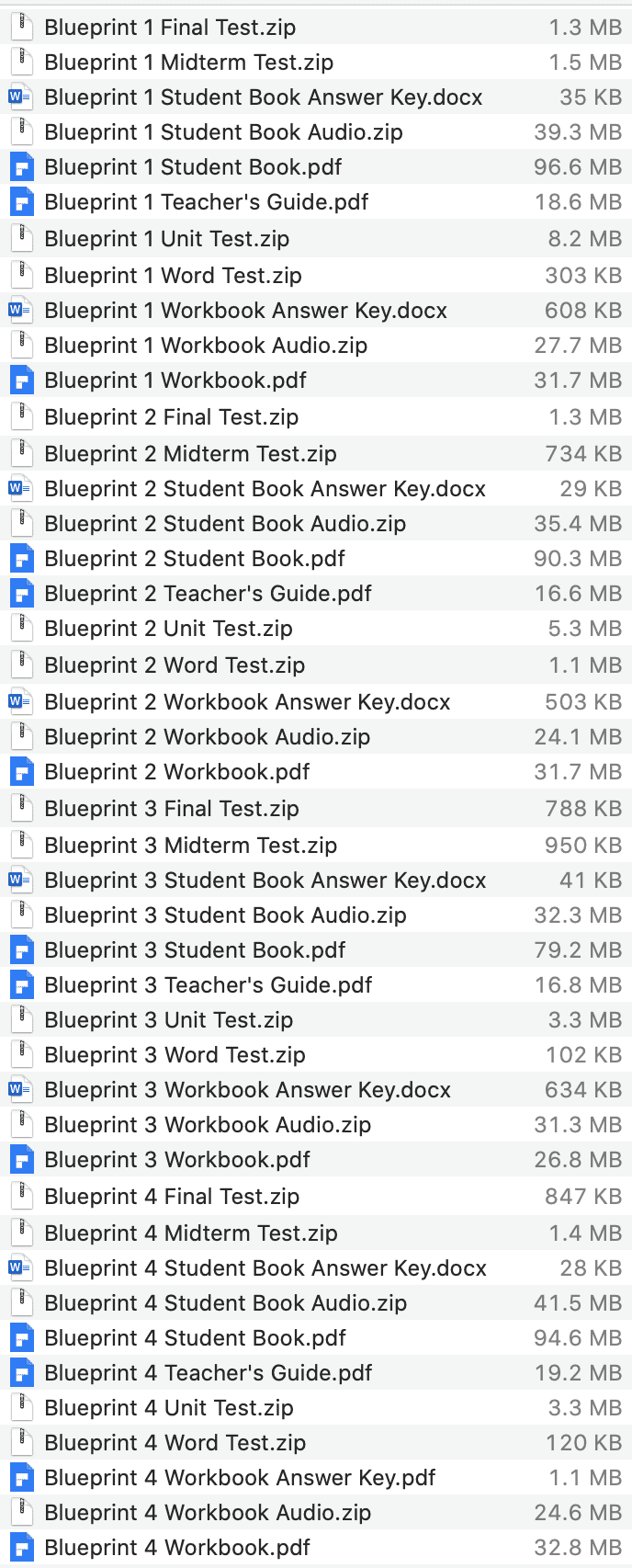
✅ Get Blueprint (Pdf Resources): $8 for one level; $40 for all 7 levels
✅ Get Blueprint (Online interactive book): $5 for one level; $30 for all 7 levels
✅ Get Blueprint (Pdf Resources + Online iTools): $70 for all 7 levels
๏ Other payment methods: Click here
Overview of “Blueprint” by Compass Publishing
Contents
| ✅ Coursebook: | Blueprint |
| ✅ Author: | Peggy Anderson, Ali Simpson |
| ✅ Publisher: | Compass Publishing |
| ✅ Levels: | A1, A1+, A2, B1, B1+, B2, C1 |
| ✅ English type: | International English |
| ✅ For: | Adult |
| ✅ Publication year: | 2018 |
“Blueprint” by Compass Publishing is a comprehensive seven-level coursebook series designed specifically for adult English learners, ranging from beginner (A1) to advanced (C1) levels on the Common European Framework of Reference for Languages (CEFR). The series aims to equip learners with practical English skills for real-world communication, focusing on everyday situations, academic contexts, and vocational topics. It emphasizes a balanced approach to language acquisition, integrating grammar, vocabulary, speaking, listening, reading, and writing skills to foster fluency and confidence.
Key Features
- CEFR-Based Curriculum: The series aligns with CEFR standards, ensuring a structured progression of language competencies across its seven levels.
- Four-Strand Approach: Drawing from linguist Paul Nation’s methodology, “Blueprint” incorporates four key strands of language learning:Meaning-Focused Input: Exposure to comprehensible reading and listening materials.
- Meaning-Focused Output: Opportunities for speaking and writing practice.
- Language-Focused Learning: Explicit instruction in grammar, vocabulary, and pronunciation.
- Fluency Development: Activities to enhance speed and ease of language use.
- Thematic Modules: Each level is organized into modules that address functional language skills (e.g., greetings, social interactions, or academic discussions) tied to relatable, real-life themes.
- Practical Content: The series emphasizes high-utility vocabulary and expressions relevant to daily life, with content tailored to adult learners’ needs and interests.
- Task-Based Learning: Activities are designed to simulate real-world tasks, allowing learners to demonstrate competency through practical application.
- Progressive Complexity: As learners advance, the series introduces more complex topics and skills, including test-taking strategies for exams like TOEIC, TOEFL iBT, and Trinity Exams.
Evolution Across Levels
- Beginner Levels (e.g., Blueprint 1): Introduce basic greetings, social situations, and foundational grammar/vocabulary.
- Intermediate to Advanced Levels (e.g., Blueprint 4-7): Incorporate more sophisticated content, such as academic writing, critical thinking tasks, and preparation for standardized English tests. Stealth CLIL (Content and Language Integrated Learning) is woven in through real-world contexts like discussion boards and reviews.
In summary, “Blueprint” is a versatile, adult-oriented English learning series that combines a structured, CEFR-aligned curriculum with practical, engaging content and extensive digital and teacher support, making it a valuable resource for learners aiming to succeed in English-speaking environments.
Blueprint 1 Student Book
Who is suitable for “Blueprint”?
“Blueprint” by Compass Publishing is designed with a specific audience in mind, making it suitable for the following groups of learners:
1. Adult English Learners
- Primary Audience: The series is tailored for adults rather than children or teens, with content and tone reflecting mature interests and real-world needs. It avoids juvenile themes and instead focuses on topics relevant to adult life, such as socializing, workplace communication, academic pursuits, and personal development.
- Age Range: Typically suited for learners aged 18 and above, including young adults, working professionals, and lifelong learners.
2. Beginner to Advanced Learners (A1-C1 CEFR Levels)
- Wide Proficiency Range: The seven-level structure accommodates learners at various stages of English proficiency:Beginners (A1-A2): Those starting with little to no English knowledge (e.g., Blueprint 1-2) learn basic vocabulary, grammar, and conversational skills for everyday situations like introductions or shopping.
- Intermediate Learners (B1-B2): Those with some foundation (e.g., Blueprint 3-5) build on fluency, comprehension, and more complex language use for discussions, writing emails, or understanding media.
- Advanced Learners (B2+-C1): More proficient learners (e.g., Blueprint 6-7) refine skills for academic, professional, or test-preparation purposes, tackling sophisticated topics and nuanced language.
- Progressive Learning: It’s ideal for learners seeking a clear, structured path from foundational to advanced competency.
3. Learners Seeking Practical, Real-World English
- Focus on Functionality: “Blueprint” is perfect for individuals who want to use English in practical, everyday contexts—whether for travel, social interactions, job opportunities, or navigating digital platforms like social media.
- Task-Based Approach: The series suits those who prefer hands-on learning through realistic tasks (e.g., writing a review, filling out forms, or participating in discussions) over purely theoretical study.
4. Students Preparing for English Proficiency Tests
- Test Preparation: Advanced levels (e.g., Blueprint 5-7) include strategies and practice for standardized exams like TOEIC, TOEFL iBT, and Trinity Exams, making it suitable for learners aiming to certify their English skills for academic or professional purposes.
- Academic Goals: It’s appropriate for adults pursuing higher education or needing English for university-level reading, writing, or presentations.
Blueprint 2 Student Book
5. Self-Directed Learners and Classroom Students
- Flexible Use: “Blueprint” works well for both independent learners (with its clear structure, workbook, and digital audio resources) and those in guided classroom settings (supported by extensive teacher materials).
- Motivated Individuals: It suits learners who are proactive and goal-oriented, as the series emphasizes doing and applying language rather than passive memorization.
6. Professionals and Vocational Learners
- Workplace Relevance: The content includes workplace scenarios (e.g., emails, meetings, or job-related vocabulary), making it ideal for adults improving English for career advancement or international job markets.
- Non-Native English Teachers: Teachers seeking structured resources to enhance their own skills or teach adult learners may also find it valuable.
7. Learners Interested in Integrated Skills Development
- Holistic Learning: “Blueprint” is suitable for those who want a balanced approach to all language skills—speaking, listening, reading, and writing—rather than focusing on just one area.
- Fluency-Driven: It appeals to learners aiming to build confidence and fluency through a mix of input (listening/reading) and output (speaking/writing) activities.
Who Might Not Be Suitable?
- Young Learners: The mature tone and adult-focused themes may not engage children or teenagers, who might prefer more colorful, age-specific materials.
- Highly Specialized Learners: Those needing English for very niche fields (e.g., medical or legal English) might find “Blueprint” too general, though it can serve as a strong foundation.
- Casual Learners Without Goals: Individuals looking for a light, unstructured introduction to English might find the series’ comprehensive approach too intensive.
Conclusion
“Blueprint” is best suited for motivated adult learners, from beginners to advanced levels, who want a practical, structured, and CEFR-aligned program to develop English skills for real-life communication, academic success, or professional growth. Its adaptability to both self-study and classroom environments, combined with its focus on functional language, makes it an excellent fit for a wide range of adult English learners.
Blueprint 3 Student Book
The benefits of “Blueprint”
“Blueprint” by Compass Publishing offers a range of benefits for adult English learners, making it a standout choice for those seeking a comprehensive, practical, and structured language-learning experience. Below are the key advantages of using this seven-level series:
1. Structured and Progressive Learning
- CEFR Alignment: The series follows the Common European Framework of Reference for Languages (A1-C1), providing a clear, internationally recognized progression from beginner to advanced levels. Learners can track their improvement and set achievable goals.
- Seven Levels: With a gradual increase in complexity, “Blueprint” ensures learners build skills incrementally, avoiding overwhelm while steadily advancing toward fluency.
2. Practical, Real-World Focus
- Functional Language: Lessons emphasize high-utility vocabulary, expressions, and skills relevant to everyday life (e.g., socializing, shopping, workplace communication), enabling learners to apply English immediately in real situations.
- Authentic Materials: Texts like dating profiles, blogs, reviews, and social media posts reflect contemporary language use, making learning relatable and engaging for adults.
- Task-Based Activities: Practical tasks (e.g., writing emails, filling out forms, role-playing conversations) simulate real-world scenarios, boosting confidence in using English outside the classroom.
3. Balanced Skill Development
Integrated Approach: “Blueprint” develops all four core language skills—speaking, listening, reading, and writing—ensuring well-rounded proficiency rather than overemphasizing one area.
Four-Strand Methodology: Based on Paul Nation’s framework, it combines:
- Meaning-focused input (listening/reading),
- Meaning-focused output (speaking/writing),
- Language-focused learning (grammar/vocabulary/pronunciation),
- Fluency development (speed and ease of use).
Holistic Growth: Learners gain both accuracy (grammar, vocabulary) and fluency (natural communication), preparing them for diverse contexts.
4. Enhanced Fluency and Confidence
- Fluency Activities: Dedicated exercises help learners speak and write more naturally and quickly, reducing hesitation and building self-assurance.
- Speaking Opportunities: Discussion prompts, pair work, and role-plays encourage active participation, helping learners overcome fear of speaking.
- Output-Driven: The emphasis on producing language (e.g., through writing guides and conversation practice) reinforces retention and practical use.
5. Support for Academic and Professional Goals
- Test Preparation: Advanced levels (e.g., Blueprint 5-7) include strategies and practice for exams like TOEIC, TOEFL iBT, and Trinity Exams, benefiting learners pursuing certifications or higher education.
- Academic Skills: Activities like essay writing, critical reading, and summarizing prepare learners for university or professional settings.
- Workplace Relevance: Vocabulary and scenarios related to emails, meetings, and job applications enhance career-related English skills.
Blueprint 4 Student Book
6. Engaging and Adult-Oriented Content
- Mature Themes: Designed for adults, the series avoids childish content and focuses on topics like relationships, travel, technology, and current events, keeping learners motivated.
- Thematic Modules: Organized around relatable themes, lessons maintain interest while teaching functional language in context.
7. Comprehensive Support Resources
- Student Resources: The Student Book, Workbook, and digital audio (e.g., via SoundCloud) provide ample practice, while writing guides and prewriting activities scaffold skill development.
- Teacher Support: The Teacher’s Edition includes answer keys, transcripts, assessments, MP3 audio, and expansion activities, making it easy for instructors to deliver effective lessons.
- Digital Tools: Classroom Digital Materials (on CD) and downloadable worksheets enhance flexibility for both in-class and remote learning.
8. Flexibility for Different Learning Styles
- Self-Study or Classroom Use: The clear structure and supplementary materials suit independent learners, while teacher resources support guided instruction.
- Variety of Activities: A mix of comprehension tasks, discussions, and creative exercises caters to visual, auditory, and kinesthetic learners.
9. Time-Efficient and Goal-Oriented
- Concise Lessons: Each unit is designed to be manageable yet impactful, ideal for busy adults balancing learning with work or other responsibilities.
- Measurable Progress: Vocabulary reviews, mid-term/final exams, and skill checks allow learners to see tangible improvement, maintaining motivation.
10. Cultural and Linguistic Insight
- Stealth CLIL: Content and Language Integrated Learning is subtly incorporated through real-world contexts (e.g., discussion boards, reviews), exposing learners to cultural nuances alongside language.
- Global Relevance: The series prepares learners to communicate effectively in diverse English-speaking environments worldwide.
Summary of Key Benefits
- For Learners: Builds practical English skills, fluency, and confidence for real-life, academic, or professional use; offers engaging, adult-focused content and a clear path to improvement.
- For Teachers: Provides robust, ready-to-use materials that simplify lesson planning and support diverse classroom needs.
- For All: Combines enjoyment with effectiveness, ensuring learners stay motivated while achieving meaningful results.
In essence, “Blueprint” empowers adult learners by offering a well-rounded, practical, and supportive English-learning experience that aligns with their goals, whether personal, academic, or professional. Its blend of structure, relevance, and flexibility makes it a highly beneficial tool for mastering English.
Blueprint 5 Student Book
Effective learning strategies for “Blueprint”
To maximize the benefits of “Blueprint” by Compass Publishing, learners can adopt effective strategies tailored to its structure, content, and goals. Since the series emphasizes practical language use, integrated skills, and a four-strand approach (meaning-focused input, output, language-focused learning, and fluency development), the following strategies can enhance learning outcomes for adult English learners at any level (A1-C1).
1. Set Clear Goals and Track Progress
Why It Works: “Blueprint” aligns with CEFR levels, offering a clear progression. Setting specific objectives keeps you motivated and focused.
How to Do It:
- Define short-term goals (e.g., mastering greetings in Blueprint 1) and long-term goals (e.g., writing an essay by Blueprint 5).
- Use the vocabulary review tests, mid-term, and final exams provided in each level to measure improvement.
- Track your CEFR level advancement (e.g., A1 to A2) to see tangible progress.
2. Engage Actively with Meaning-Focused Input
Why It Works: The series provides authentic reading and listening materials (e.g., blogs, social media posts, audio tracks) to build comprehension and vocabulary.
How to Do It:
- Pre-Listening/Reading: Preview questions or titles in the Student Book to predict content and activate prior knowledge.
- Active Engagement: Listen to MP3 audio (available via SoundCloud or CD) multiple times—first for gist, then for details. Take notes on key phrases or ideas.
- Post-Activity: Summarize what you read or heard in your own words to reinforce understanding.
- Extend Learning: Seek similar real-world content (e.g., podcasts, articles) on topics covered in each module.
3. Practice Meaning-Focused Output Regularly
Why It Works: Speaking and writing activities in “Blueprint” encourage learners to produce language, a critical step toward fluency.
How to Do It:
Speaking:
-
- Pair up with a study partner or language exchange peer to practice role-plays, discussions, or conversation prompts from the Student Book.
- Record yourself answering questions or completing tasks, then listen to improve pronunciation and fluency.
- Use phrases from the book in real-life situations (e.g., ordering food, making small talk).
Writing:
-
- Follow the writing guides and prewriting activities in each unit to structure your responses (e.g., emails, reviews).
- Write short daily entries (e.g., a journal or social media post) using new vocabulary and grammar.
- Seek feedback from a teacher, tutor, or online platform to refine your work.
4. Master Language-Focused Learning
Why It Works: Explicit grammar, vocabulary, and pronunciation exercises in “Blueprint” build a strong foundation for accurate communication.
How to Do It:
Vocabulary:
-
- Create flashcards (physical or digital, e.g., via Quizlet) for new words from each unit, including definitions, example sentences, and synonyms.
- Use the Workbook’s vocabulary exercises to reinforce retention, and revisit them weekly.
- Group related words (e.g., travel terms) to see patterns and boost recall.
Grammar:
-
- Study grammar rules in the Student Book, then practice with Workbook exercises.
- Write or speak additional sentences using the target structure (e.g., past tense for storytelling).
- Identify grammar in real-life contexts (e.g., spotting conditionals in articles).
Pronunciation:
-
- Mimic audio tracks to practice intonation, stress, and sounds.
- Focus on one sound or feature per week (e.g., /θ/ vs. /ð/ in Blueprint 2) using minimal pair exercises.
5. Develop Fluency Through Repetition and Speed
Why It Works: Fluency activities in “Blueprint” aim to increase speed and ease, helping learners communicate naturally.
How to Do It:
- Timed Practice: Revisit speaking or writing tasks with a timer, aiming to complete them faster each time (e.g., a 1-minute self-introduction).
- Shadowing: Listen to audio while repeating it aloud simultaneously to improve rhythm and pace.
- Recycle Content: Re-read texts or re-do conversations from earlier units to build automaticity.
- Daily Chunks: Practice short, high-frequency phrases (e.g., “Can you help me?”) until they roll off the tongue effortlessly.
Blueprint 6 Student Book
6. Leverage Supplementary Resources
Why It Works: “Blueprint” offers extensive tools (Workbook, audio, digital materials) to reinforce and expand learning.
How to Do It:
- Complete Workbook exercises after each Student Book unit to solidify skills.
- Use the audio tracks for listening practice outside study time (e.g., during commutes).
- Explore downloadable worksheets from Compass Publishing’s website for extra practice.
- Review Teacher’s Edition word lists (if accessible) to deepen vocabulary knowledge.
7. Simulate Real-World Application
Why It Works: The task-based approach in “Blueprint” mirrors real-life scenarios, making practice more meaningful.
How to Do It:
- Role-play unit tasks in realistic settings (e.g., pretend to book a hotel room over the phone).
- Write practical texts (e.g., a job application email) based on unit models, then use them if possible.
- Join online forums or groups to discuss topics from the book (e.g., travel tips from Blueprint 3).
- Test your skills in authentic situations (e.g., chatting with a native speaker or watching English media).
8. Collaborate and Reflect
Why It Works: Interaction and self-assessment enhance retention and motivation, key aspects of “Blueprint’s” design.
How to Do It:
- Collaboration: Form a study group to discuss lessons, quiz each other, or practice speaking tasks.
- Reflection: After each unit, write or record a short reflection: What did I learn? What’s still hard? How can I use this?
- Feedback Loop: Share output (e.g., writing or recordings) with peers or a teacher for constructive input.
9. Incorporate Spaced Repetition
Why It Works: Revisiting material over time strengthens long-term memory, aligning with “Blueprint’s” cumulative approach.
How to Do It:
- Review vocabulary and grammar from previous units weekly (e.g., 10 minutes every Sunday).
- Use apps like Anki to schedule repetition of key terms or phrases.
- Revisit earlier audio tracks or texts to refresh listening and reading skills.
10. Stay Consistent and Motivated
Why It Works: Regular practice and a positive mindset ensure steady progress through “Blueprint’s” structured modules.
How to Do It:
- Routine: Study 20-30 minutes daily (e.g., one lesson section) rather than cramming.
- Reward System: Celebrate milestones (e.g., finishing a level) with a treat or break.
- Connect to Goals: Remind yourself how “Blueprint” skills (e.g., test prep, job skills) align with your aspirations.
- Mix It Up: Alternate between skills (e.g., listening one day, speaking the next) to keep sessions fresh.
Sample Weekly Plan (e.g., Blueprint 3, Intermediate Level)
- Monday: Preview Unit 1, read text, do vocab exercises (Student Book).
- Tuesday: Listen to audio twice, complete listening tasks, practice pronunciation.
- Wednesday: Study grammar, do Workbook grammar exercises, write a short paragraph.
- Thursday: Practice speaking tasks with a partner, record yourself, review mistakes.
- Friday: Complete Workbook review, take vocab quiz, reflect on progress.
- Weekend: Apply skills (e.g., write a social media post), revisit weak areas.
Final Tips
- Adapt to Your Level: Beginners (Blueprint 1-2) should focus on repetition and basics; advanced learners (Blueprint 6-7) can emphasize output and test strategies.
- Use the Series’ Strengths: Lean into its real-world focus and integrated skills by practicing outside the book whenever possible.
- Be Patient: Fluency takes time—trust “Blueprint’s” gradual build-up.
By combining these strategies with “Blueprint’s” resources, learners can effectively develop practical English skills, gain confidence, and achieve their language goals.
Blueprint 7 Student Book
Effective teaching strategies for “Blueprint”
Teaching “Blueprint” by Compass Publishing effectively requires strategies that leverage its structured, CEFR-aligned curriculum, practical focus, and comprehensive resources while addressing the needs of adult English learners (A1-C1). The series’ four-strand approach (meaning-focused input, output, language-focused learning, and fluency development) and its emphasis on real-world application provide a strong foundation for engaging and impactful instruction. Below are effective teaching strategies tailored to “Blueprint” for classroom or one-on-one settings.
1. Align Lessons with Learners’ Goals
Why It Works: “Blueprint” is designed for adult learners with practical, academic, or professional aims. Tailoring lessons to their objectives increases motivation and relevance.
How to Do It:
-
- Begin by assessing students’ goals (e.g., daily communication, test prep, job skills) using a quick survey or discussion.
- Highlight how each unit connects to these goals (e.g., Blueprint 5’s writing tasks for TOEFL preparation).
- Use the Teacher’s Edition assessments (mid-term/final exams) to track progress toward specific targets.
2. Maximize Meaning-Focused Input
Why It Works: The series provides authentic listening and reading materials (e.g., blogs, audio tracks) to build comprehension and expose learners to natural language.
How to Do It:
Pre-Task Activation: Introduce the topic with a warm-up (e.g., brainstorm words related to “travel” before a Blueprint 3 unit). Use visuals or realia to spark interest.
Scaffolded Listening/Reading:
-
- Play audio (from MP3s or SoundCloud) or present texts in stages: first for gist (main idea), then for details (specific info).
- Pause to check comprehension with simple questions (e.g., “What’s the speaker’s problem?”).
Post-Task Extension: Encourage students to find similar real-world examples (e.g., a news article) and share findings in the next class.
3. Encourage Meaning-Focused Output
Why It Works: Speaking and writing tasks in “Blueprint” simulate real-life scenarios, fostering practical skills and confidence.
How to Do It:
Speaking:
-
- Use pair or group work for role-plays and discussion prompts (e.g., debating a topic from Blueprint 4). Rotate pairs to build interaction skills.
- Model responses first, then let students practice with guided prompts from the Student Book.
- Incorporate “speed conversations” where students repeat a task (e.g., introductions) with multiple partners to boost fluency.
Writing:
-
- Break down writing guides into steps: brainstorming, drafting, and editing. Use prewriting activities as a class exercise.
- Assign short, realistic tasks (e.g., a review or email) and provide peer or teacher feedback.
- Display or share standout student work to motivate the class.
4. Focus on Language-Focused Learning
Why It Works: “Blueprint” includes explicit grammar, vocabulary, and pronunciation instruction to build accuracy, a cornerstone of effective communication.
How to Do It:
Vocabulary:
-
- Teach words in context using examples from the Student Book, then create a class word wall or digital list (e.g., on Padlet).
- Use games like vocab bingo or matching exercises from the Teacher’s Edition word lists.
- Assign Workbook exercises as homework, then review answers collaboratively.
Grammar:
-
- Present rules inductively: Show examples from the text, ask students to deduce the pattern (e.g., present perfect in Blueprint 3), then explain.
- Use controlled practice (e.g., fill-in-the-blanks) followed by freer practice (e.g., sentence creation).
Pronunciation:
-
- Drill key sounds or stress patterns from audio tracks (e.g., /ɪ/ vs. /iː/ in Blueprint 2).
- Record students reading aloud, then play back for self-correction or group feedback.
5. Build Fluency Through Dynamic Activities
Why It Works: Fluency development is a key strand of “Blueprint,” helping learners use English quickly and naturally.
How to Do It:
- Timed Tasks: Set a timer for speaking or writing activities (e.g., 1-minute responses to a question), gradually reducing time to increase speed.
- Repetition with Variation: Revisit a speaking task (e.g., ordering food) with new partners or slightly altered scenarios.
- Fluency Circles: Students stand in two circles (inner and outer), rotating to ask/answer unit questions rapidly.
- Shadowing: Play audio and have students repeat simultaneously to mimic native rhythm and pace.
6. Utilize Teacher Resources Effectively
Why It Works: The Teacher’s Edition, digital materials, and downloadable worksheets provide robust support for planning and delivery.
How to Do It:
- Use answer keys and transcripts to prepare clear explanations and anticipate student questions.
- Incorporate expansion activities from the Teacher’s Edition to extend lessons (e.g., extra discussion questions).
- Leverage Classroom Digital Materials (CD) for interactive whiteboard exercises or progress tracking.
- Assign downloadable worksheets for homework or in-class reinforcement.
7. Incorporate Task-Based Learning
Why It Works: “Blueprint’s” real-world tasks (e.g., filling out forms, writing reviews) mirror authentic language use, enhancing practical application.
How to Do It:
Task Cycle: Follow a three-step process:
- Pre-Task: Introduce the task (e.g., planning a trip) with vocab and examples.
- Task Execution: Students complete it individually or in groups (e.g., create an itinerary).
- Post-Task: Share results, discuss challenges, and refine language use.
Real-Life Simulation: Bring props (e.g., menus, forms) or use role-play cards to make tasks immersive.
Project Work: Assign a multi-unit project (e.g., a group presentation in Blueprint 6) to integrate skills.
8. Foster Collaboration and Interaction
Why It Works: Group activities align with “Blueprint’s” speaking and discussion focus, encouraging peer learning and confidence.
How to Do It:
- Use think-pair-share: Students think individually, discuss with a partner, then share with the class.
- Assign group problem-solving tasks from the book (e.g., planning a party in Blueprint 2).
- Create a “language café” session where students chat freely using unit phrases, guided by prompts.
9. Provide Constructive Feedback
Why It Works: Feedback helps learners refine skills, aligning with “Blueprint’s” emphasis on output and accuracy.
How to Do It:
- Focus on one or two areas per task (e.g., grammar accuracy, pronunciation clarity) to avoid overwhelming students.
- Use a “sandwich” method: Praise effort, suggest improvement, end with encouragement.
- Encourage self-assessment: After a task, have students reflect (e.g., “What went well? What can I improve?”) using unit goals as a guide.
10. Adapt to Diverse Learners
Why It Works: Adult learners vary in pace, style, and needs; “Blueprint’s” flexibility supports customization.
How to Do It:
- Differentiate: Offer simpler prompts for beginners (e.g., Blueprint 1) and challenge advanced students (e.g., Blueprint 7) with extra questions or test-prep tasks.
- Mix Modalities: Combine visual (texts, whiteboard), auditory (audio), and kinesthetic (role-plays) activities.
- Personalize: Let students choose topics or tasks from the unit that interest them (e.g., travel vs. technology in Blueprint 4).
Sample Lesson Plan (Blueprint 3, Unit 4: “Shopping”)
- Warm-Up (5 min): Show a shopping ad, ask: “What do you buy often?” (Pre-task).
- Listening (15 min): Play audio of a shopping dialogue, check gist/details with Student Book questions.
- Vocabulary (10 min): Teach shopping terms (e.g., “discount,” “refund”) with a matching game.
- Grammar (15 min): Present comparatives (e.g., “cheaper than”), practice with Workbook exercises.
- Speaking (15 min): Role-play a customer and clerk, using unit phrases.
- Wrap-Up (5 min): Students share one new phrase they’ll use, assign Workbook homework.
Final Tips
- Leverage the Series’ Strengths: Emphasize its real-world focus by connecting lessons to students’ lives.
- Balance Structure and Fun: Use “Blueprint’s” clear layout but add games or spontaneity to keep adults engaged.
- Encourage Autonomy: Teach students to use audio and Workbook independently for self-study.
By employing these strategies, teachers can unlock “Blueprint’s” full potential, creating dynamic, student-centered lessons that build practical English skills, fluency, and confidence for adult learners.

